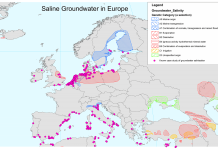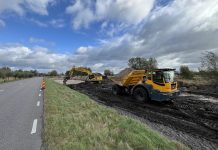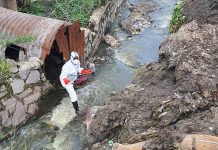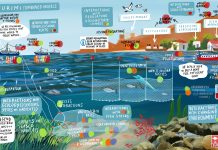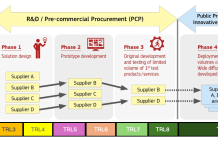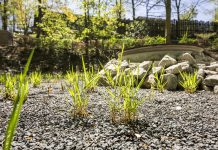Open Access Government produces compelling and informative news, publications, eBooks, and academic research articles for the public and private sector looking at health, diseases & conditions, workplace, research & innovation, digital transformation, government policy, environment, agriculture, energy, transport and more.
Home 2025
Archives
Salinization of coastal groundwaters in the EU – What can we do about it?
Written as part of the LIFE-FRESHMAN project, this article examines the issue of coastal groundwater salinization in the EU, particularly its impact on freshwater reserves, and highlights key strategies for mitigation.
The benefits of harvest residue and vegetation control on conifer seedling survival and growth
Mark Kimsey, the Director of the Intermountain Forestry Cooperative, discusses the benefits of harvest residue and vegetation control on conifer seedling survival and growth.
Sudbury peatland restoration from metal pollution
Professor Pete Whittington discusses efforts to restore metal-contaminated peatlands in Sudbury, Ontario, which were heavily affected by mining since the 1880s.
Vellinge reinvents flood protection with nature-based innovation
Nature meets engineering in Vellinge’s innovative flood defence, setting a new standard for sustainable coastal protection, Anders Purcell, Project Manager at Vellinge Municipality explains.
Rare earth, critical minerals, and bio-molecules: Centering African IPLCs in the new resource economy
Dr. Metolo Foyet, Conservation Equity & Safeguards Specialist at The Nature Conservancy, highlights the intersections of critical minerals, biodiversity, and Indigenous rights in the global green transition.
Environmental surveillance as a sentinel for emerging outbreaks: Lessons from mpox in Africa
Here, various academic experts examine research on environmental surveillance as an early warning system for emerging outbreaks, focusing on lessons learned from Mpox in Africa.
Algae4IBD: A holistic approach to IBD treatment
The Algae4IBD project is exploring the untapped potential of algae and cyanobacteria to manage inflammatory bowel disease (IBD). In this exclusive Q&A, Dr. Dorit Avni, Research Group Leader explains how the team are creating innovative functional foods, aiming to improve quality of life and prolong remission for patients worldwide.
SURIMI: Pioneering sustainable fisheries management via EU DTO
Patrycja Antosz, the Research Director of the Center for Modeling Social Systems in NORCE Research AS, shares details of the SURIMI project, part of the European Digital Twin of the Ocean (EU DTO) initiative, aiming to enhance sustainable fisheries management.
Forest management in an uncertain future: The role of tree diversity
Prof Dr Andreas Rigling and Dr Valentina Vitali highlight the importance of tree diversity for enhancing forest resilience in an uncertain future.
Soil health: Assessing and monitoring using soil biology
Lynette Abbott from The University of Western Australia, focuses again on soil health, this time by assessing and monitoring using soil biological indicators.
COP30 in Belém: Leadership between two worlds
Professor Richard Beardsworth continues his analysis of expectations for COP30 in Belém, as he navigates leadership between two realms, one rules-based and co-operative, the other nationalist-populist and centrifugal.
The challenges around the fastness of natural dyes for textiles
Victor Durand from Ever Dye sheds light on the challenges surrounding the fastness of natural textile dyes. Dive into his insights, and learn why this issue is crucial for the future of the textile industry.
Energy-efficient greenhouse production for emission-free food cultivation
Michel J. Verheul discusses the advancements in energy-efficient and emission-free greenhouse production in Norway, focusing on the innovative methods developed by researchers at the Norwegian Institute of Bioeconomy Research (NIBIO).
Knowledge tipping points: Co-creating rainforest futures
The article highlights the importance of envisioning multiple futures for human and rainforest coexistence. It emphasizes forest conviviality and knowledge co-creation, drawing insights from the PRODIGY research project, which shows that knowledge systems are essential for socioecological resilience.
How innovation procurement can boost European water resilience
As Europe faces rising water crises, PCP WISE brings innovation procurement to the forefront to develop smarter, scalable tools for real-time water management and climate resilience.
Could the summer 2025 earthquake awakening be provoked by magnetic storms?
Dimitar Ouzounov (1,2) and Galina Khachikyan (3) expertly walk us through the strong earthquakes awakening in July and August of 2025, which geomagnetic storms could have provoked in June 2025.
Pharmaceuticals and personal care products in wastewaters
Despite progress in wastewater treatment, PPCPs like medications and personal care products continue to enter ecosystems, threatening aquatic life. Since 2020, the Bow River Ecosystem Health Assessment project in Alberta, Canada, has been evaluating the impact of treated wastewater on the Bow River.
LIFE4ZOO: Sustainable water circulation in zoos
LIFE4ZOO is a project dedicated to sustainable water circulation for the future of zoos, as explained by experts Tomáš Lederer, Petr Kvapil and Paola Sepúlveda-Ruiz.
Volcanism, volcanic ash, and its role in forest ecology and management
Mark Kimsey, the Director of the Intermountain Forestry Cooperative, discusses volcanism, volcanic ash, and their roles in forest ecology and management.
Consciousness research: The science that changes everything for CEOs
Find out here why the world’s most successful business leaders are embracing consciousness research to drive sustainable transformation.

